Zhuge's fame hangs in the universe and the history of Shaoling's poems is passed down through the ages---A visit to Du Fu Cottage in Wuhou Temple, Chengdu
Throughout the ages, there have been two types of people who will always be remembered for a long time by future generations with infinite reverence. One type is who dedicated their lives for the ideals of the country and the nation, just like Zhuge Liang and Fan Zhongyan; the other is who cares about the safety of the world and writes immortal stories that will be passed down through the ages, just like Du Fu and Xin Qiji. The Wuhou Temple and Du Fu Cottage in Chengdu are sacred places to commemorate these two groups of people.

Wuhou Temple is located in the downtown area of southwest Chengdu. Although the name of the temple was named "Han Zhaolie Temple"(Liu Bei posthumously named Emperor Zhaolie), and a huge plaque was hung on the gate. But generations after generation, people have always called it Wuhou Temple (Zhuge Liang was granted the title of "Marquis of Wuxiang" during his lifetime and posthumously named "Zhongwu" after his death)

As the only temple in the country where monarch and minister worship together and the most influential museum of the Three Kingdoms relics in the world, Wuhou Temple enjoys the reputation of the "Holy Land of the Three Kingdoms".

After entering the door, there is a courtyard full of green trees and paved roads. A long corridor leads directly to the second gate. There are ancient steles from the Tang and Ming Dynasties on both sides of the road.

In the east stele corridor, the "Ancestral Hall Monument of Zhuge Wuhou, Prime Minister of Shu Han" was erected during the Yuanhe period of Emperor Xianzong of the Tang Dynasty. The inscription was written by Pei Du, the famous prime minister of the Tang Dynasty. It was written by the calligrapher Liu Gongchuo (brother of Liu Gongquan), and the famous craftsman Lu Jian engraved the inscriptions. Because of his excellent writing, calligraphy and carving skills, it was called the "Sanjue Stele" by later generations.


I met a ten-year-old boy. Under the leadership of his mother, he learned the tour guide business meticulously and was quite professional.

The plaque hanging directly above the second gate,"Be good through the ages", was written by Wu Ying, the governor of Sichuan during the Kangxi period of the Qing Dynasty, and takes the meaning of "Be a good monarch and a good minister, and set an example through the ages." "" is a variant of "Ming", and the two characters are synonymous.

On the walls of the East and West Wenhua and Wuying corridors, there are embedded Yue Fei's cursive script "Graduation Notes" before and after.

Yue Fei started writing running scripts, but he was extremely excited during the process of writing. In the middle, he started writing cursive scripts, writing dragons and snakes, and overturning the sea and rivers. The words on a black background and white in the dark corridor are like lightning in the long night. Looking at the ink marks like tears and tears, and the tip of the pen is like a spear and a halberd, it seems to hear the soul resonance of these two loyal ministers and good generals after a period of 900 years.



In the east and west corridors, there are fourteen sitting statues of Shu Han civil officials and fourteen generals respectively. On the east side, Langfang is led by Pang Tong, and on the west side, the military gallery is led by Zhao Yun. Each statue is life-sized, with an imposing appearance and both form and spirit, reflecting the superb clay sculpture skills of my country's Qing Dynasty folk artists.



Behind the second gate is Liu Bei Hall, a single-eaves Xieshan building. In the center is a gold-plated statue of Liu Bei, with a solemn and full appearance. Accompanying the statue on the left is a statue of his grandson Liu Chen. The statue of Liu Bei had a statue of his son Liu Chan, but because Liu Chan was fatuous and incompetent, could not keep his foundation and humiliated the country, he was removed by Sichuan local officials during the Song Zhenzong period, and it was not rebuilt later.


Unique roof statue. The roof is piled with flame pearls, two dragons playing with beads, and the waist flowers decorated with Maitreya Buddha statues.

Behind Liu Bei's Hall, there are several steps down (the Wuhou Temple is lower than the Zhaolie Temple of the Han Dynasty, symbolizing the relationship between monarch and minister in ancient times). There is a hall with a plaque of "Wuhou Temple" written by Guo Moruo.

Under the light and shadow, it has a unique flavor.

On the pillars on both sides, Dong Biwu's "Three Strategies to Consider the World, and a Time to Meet the Situation of Ancient and Modern Times" wrote a vigorous and powerful note, while Guo Moruo's "A Form of Aspiration to Meet the Graduation, Good to Sing for Father Liang" floated in the air.


The plaque "Famous in the Universe" hangs in the Hall of Zhuge Liang.

On both sides of the Qing Dynasty, Zhao Fan wrote a famous couplet titled "If you can attack the heart, you will disappear. From ancient times, it is known that soldiers are not warlike; if you don't judge the situation, you will be lenient and strict. Later, when governing Shu, you must think deeply." It is said that when Mao Zedong visited the Wuhou Temple in 1958, he watched the "Heart-attacking couplet" for a long time. He may be carefully savoring the profound philosophy of governing the country and maintaining peace contained in the alliance, or he may be using historical thinking to judge the success or failure of Zhuge Liang's attack on the heart and the situation.

The statue of Zhuge Liang is in a shrine with a plaque of "Jingyuantang" hanging to express his lifelong sentiments. He is wearing a turban and holding a feather fan, and is in deep thought. On the left and right walls of the hall are written two of his famous writings. On the left is "Longzhong Dui", which is a detailed analysis and predicts the world's events in the future; on the right is "Former Graduation Table", which makes a generous speech and expresses his concern for the country and the people.

Behind Zhuge Liang Hall is Sanyi Temple, which is unfortunately under renovation. To the west is Kongming Garden, with stone carvings from the Song Dynasty on both sides.





After listening to Li Garden, it is the place where Internet celebrities check in-"Red Walls and Roads". Red courtyard walls on both sides surround both sides of Huiling, paved with bluestone roads. Dense bamboo grows outside, leading to the generation of kings who have been sleeping for more than 1700 years.

Unfortunately, it was cloudy, and I could only vaguely see the mottled tree shadows reflected through the bamboo forest on the wall-"Bamboo Shadow on the Red Wall".




The winding red walls and the quiet and deep bamboo forests make people unable to see the end at a glance.




Many tourists come here and pose for photos.


Go south to the Three Kingdoms Cultural Exhibition Hall, which mainly introduces important battles during the Three Kingdoms period, displays unearthed cultural relics, etc.

On the stone tablet at the entrance is Yang Shen of the Ming Dynasty's "Linjiang Immortal: Rolling Yangtze River Flowing East".

A relic of the Han Palace

In front are the unearthed terracotta warriors of the honor guard, and behind are murals of the Battle of Chibi. Does Su Shi's words "Thinking about Gong Jin in the past, Xiao Qiao first married, and he was magnificent?" Feather fans and turbans, and while laughing and laughing, the oars are turned into ashes."

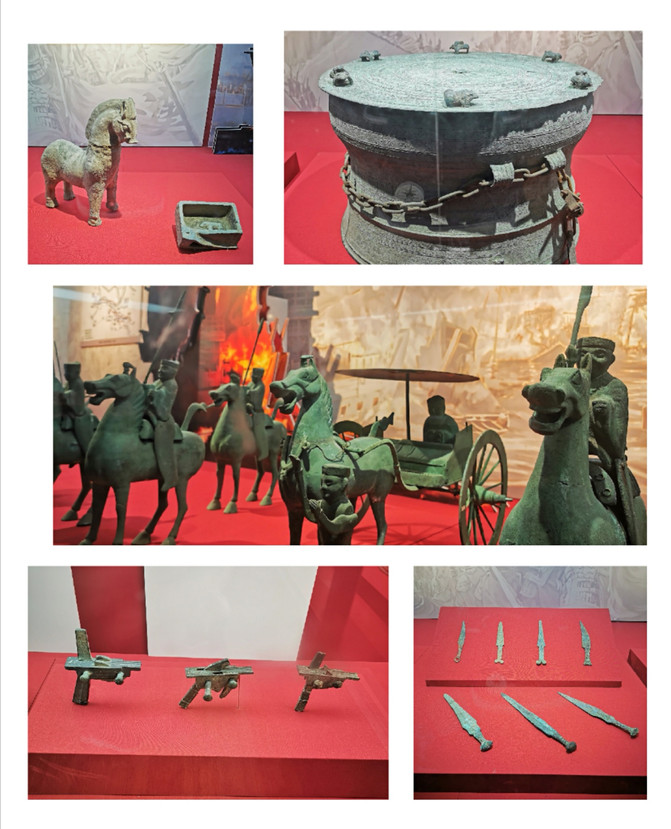
Theater costumes and official hats.




Du Fu's Cottage is only three kilometers away from Wuhou Temple. According to reports, Du Fu is the one who visits Wuhou Temple the most. His Seven Wonders "Shu Xiang": Where to find the Prime Minister's ancestral temple? The trees outside Jinguan City are densely populated. The green grass reflects the steps from the spring, and the orioles across the leaves sound in the sky. Three times frequently troubled the world's plans, and the two dynasties helped the hearts of the old minister. Before he can finish the battle, he dies first, and the hero's lips will be filled with tears. It expresses Du Fu's admiration for Zhuge Liang's intelligence and moral character and his regret for his failed achievements. It not only comments on history, but also contains practical support.
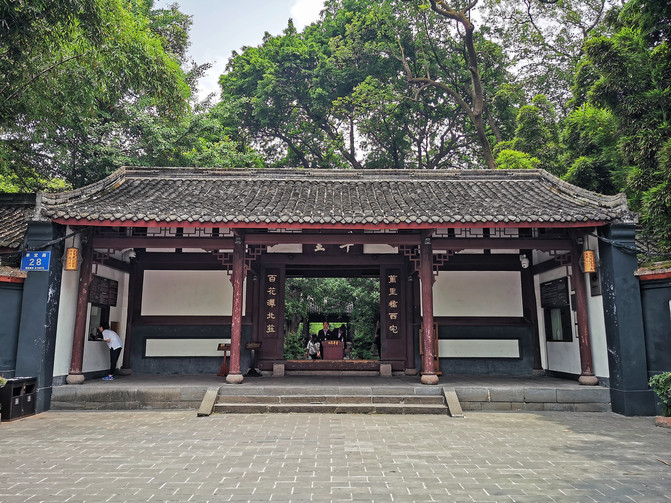
In order to avoid the "Anshi Rebellion", Du Fu lived in Chengdu and built his own thatched house next to the Huanhua River. In the past four years, he wrote more than 240 poems that have been passed down to this day. The thatched house has been praised as "the Holy Land of Chinese Literature". At the end of the Tang Dynasty, the poet Wei Zhuang found the ruins of the Cottage and rebuilt the thatched cottage. After successive expansions, the current Du Fu Cottage has reached a scale of 300 acres. It is no longer the thatched thatched hut with low eaves. If Du Fu had lived in such a large thatched cottage at that time, he probably would not have written the poem "If you can live in thousands of buildings, you can protect the poor people in the world and all rejoice."

This is the Huanhua River outside the main entrance of the Cottage. The Huanhua River is famous because of Du Fu. The Huanhua River in Du's poem has become a masterpiece through the ages. Du Fu's "Quatrain"-two orioles sing green willows, a line of egrets rises to the blue sky, the windows contain thousands of autumn snow in the Xiling Mountains, and the door moors thousands of miles of Dongwu ships. It describes the beautiful scenery in this area, but unfortunately, the times have changed and the scenery of the past has no longer been seen.
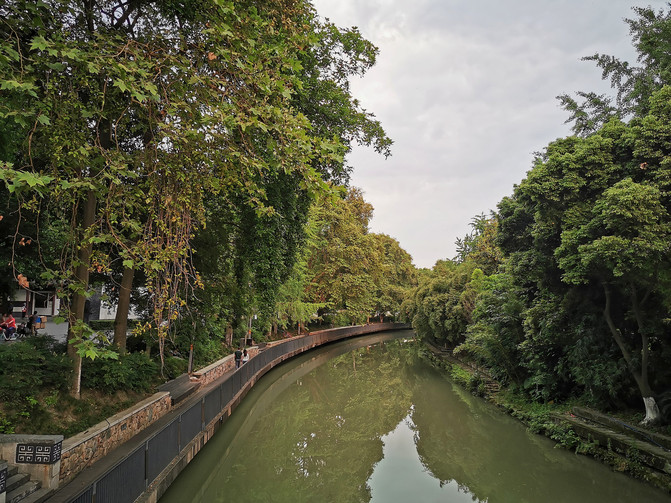
The Zhaobi in front of the main entrance is solemn and solemn with pink walls and blue tiles.

Walking into the main entrance of the thatched cottage, you will find the sun shaded by the thick shade and surrounded by winding water. The big office is revealed under the shade of green trees.

"Xi" means official office, that is, the place where local officials worked in ancient times.


Du Fu was respected by later generations as the "Poetry Saint", and his poems were called "Poetry History", hence the name "Poetry History Hall".


The warm sun of late spring sprinkled on the new branches in front of the Poetry and History Hall, and the breeze blew the tender green leaves. Everything seemed so peaceful and peaceful. The poet saint sat inside and silently enjoyed the spring light of the courtyard.

Chaimen was originally the courtyard gate built by Du Fu when he built the Cottage. Because of its simplicity and low, the poet gave it such a veritable name.

The Temple of the Ministry of Works is the last of the five main buildings. Because Du Fu was recommended by Yan Wubiao as a member of the Inspection Department of Industry when he was in Chengdu, later generations respectfully called him Du's Department of Industry. In front of the temple of the Ministry of Works, there is the most famous couplet written by He Shaoji, a native of the Qing Dynasty: Jinshui Spring Breeze Gong Occupying, People's Day of the Cottage I Return (People's Day: the seventh day of the first month).



The Shaoling Stele Pavilion is roofed with thatched grass and a stone tablet is planted inside. The four characters "Shaoling Cottage" are engraved with the words "Shaoling Cottage". The writing power is rich. It was written by Prince Guo Yunli of the Qing Dynasty (brother of Yongzheng).

The thatched hut is a typical folk house in western Sichuan. It has a bucket-style structure and a thatched roof. The whole building is simple and natural.
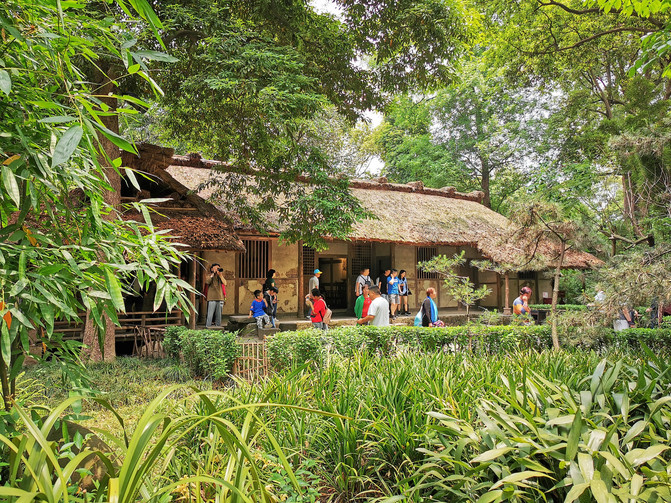

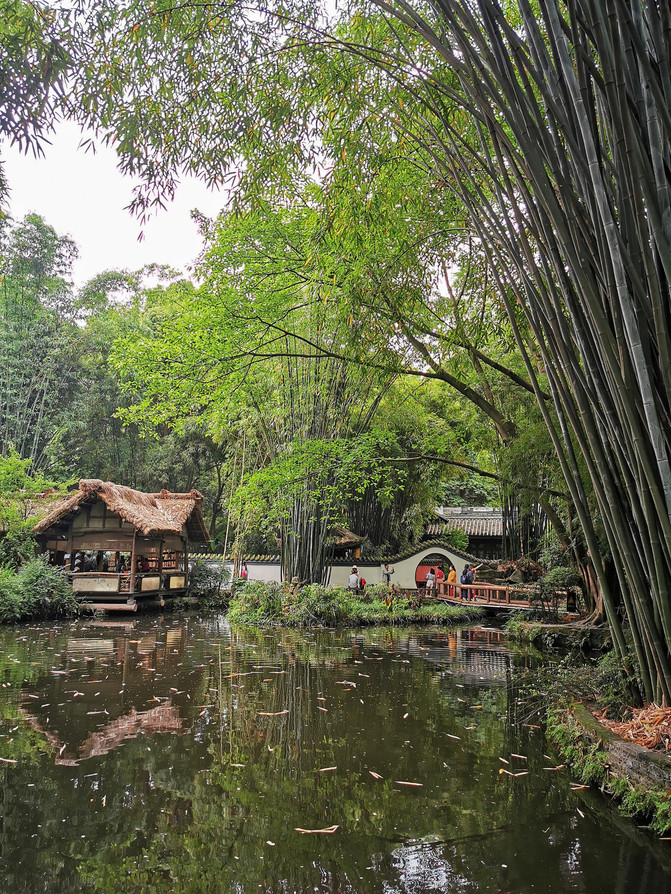
In the middle is the main room, on the left and right are the bedrooms, and on the east is the kitchen.
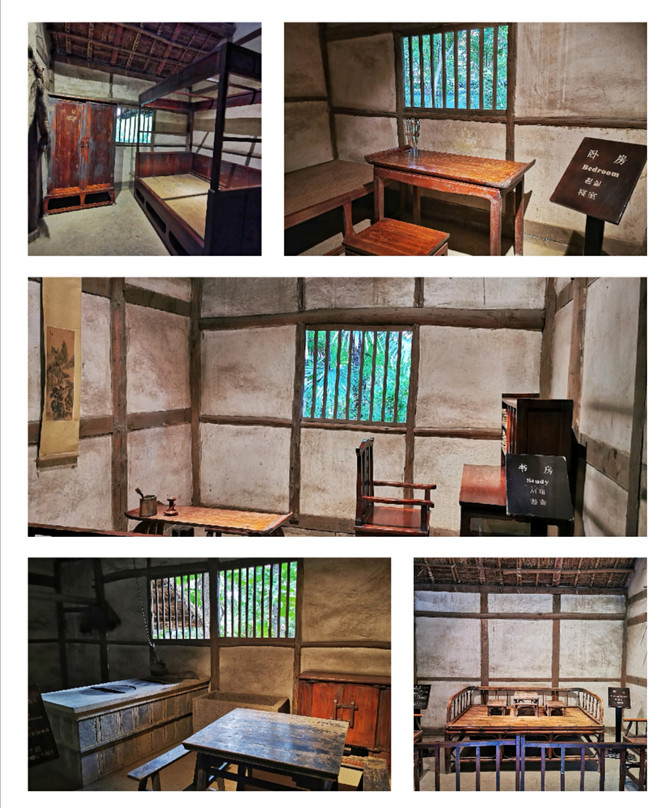
Du Fu wrote "The Song of the Cottage Broken by the Autumn Wind" here, which has become a masterpiece admired by future generations throughout the ages. This immortal masterpiece is engraved on the stone tablet.

Back then, in front of Du Fu's thatched hut, there was a path planted with flowers and trees on both sides. He once wrote in his poem: "The flower path has never been swept by guests, and the tent door is now open for you." Today's Flower Path is a red-walled path connecting the Du Fu Cottage Memorial Building Complex and the original Caotang Temple.



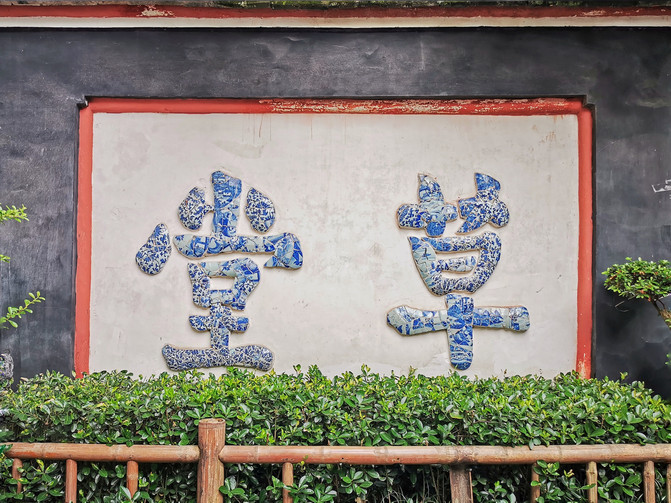

The red walls here are not as solemn and profound as the Wuhou Temple. If you take photos here in ancient costumes, you will instantly become ancient people.


Du Fu's Thousand Poetry Monument was completed only at the end of 2018. It is mainly a stone carving corridor for Du Fu's poems, calligraphy, and displays Du Fu's poems and calligraphy works created by famous artists from past dynasties.
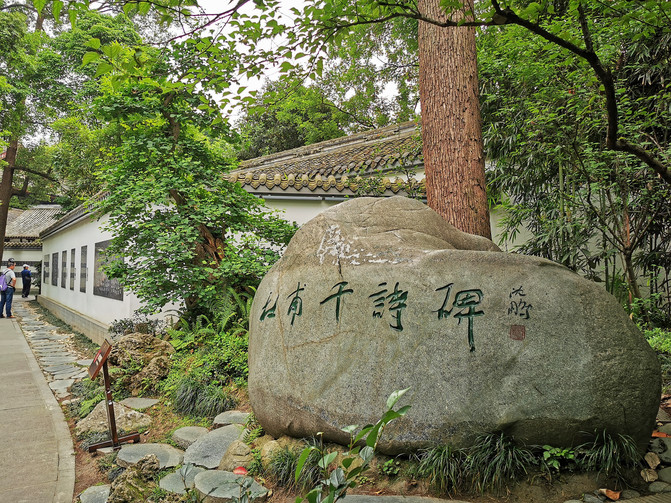


The well-known song "Happy Rain on Spring Night"-good rain knows the season, and it happens when spring. Dive into the night with the wind, moisten things silently.



After passing through the Poetry and History Hall, turning westward, passing through the water sill, passing through the Moon Cave Gate, you will reach Plum Garden. Standing outside the Yuedong Gate, you can see a four-story brick tower standing on the lake. The tower is named "List Pavilion." Take the meaning of the sentence "A glance at the mountains and small" in Du Fu's poem "Wangyue".
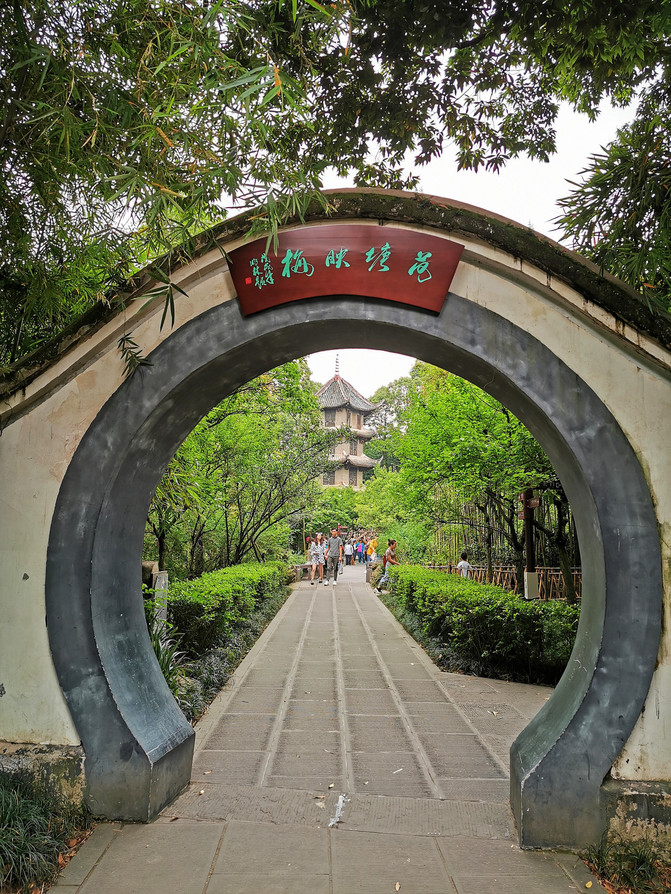

The fruit of the Dagong Pink Plum in the Plum Garden is nearly ripe. According to reports, the plum blossoms are in full bloom during the first month, and at that time there was a poetic scene of "flowers weighing on Jinguan City."




Dayaitang was originally the main hall of Caotang Temple. The three words "Dayaitang" on the plaque on the door are the words of Yan Zhenqing, a famous calligrapher in the Tang Dynasty.



The Tang Dynasty Ruins Exhibition Hall is located to the northeast of the Cottage. At the end of 2001, when laying underground pipes in the thatched cottage, Tang Dynasty ash pits and Tang Dynasty living relics were discovered on the west side of the main entrance and the northeast of the Ministry of Industry Temple respectively. A large number of Tang Dynasty artifacts and a series of Tang Dynasty tower inscriptions were unearthed in the site. This discovery confirms Du Fu's poem's description of the natural features, living scenes and the location of the thatched cottages in the Huanhua River area.



Previous Article:Slow-paced life and mouth-watering food, this is Chengdu's leisure and laziness!
Next Article:Winter in Sichuan, with a different charm, a paradise for food and entertainment
